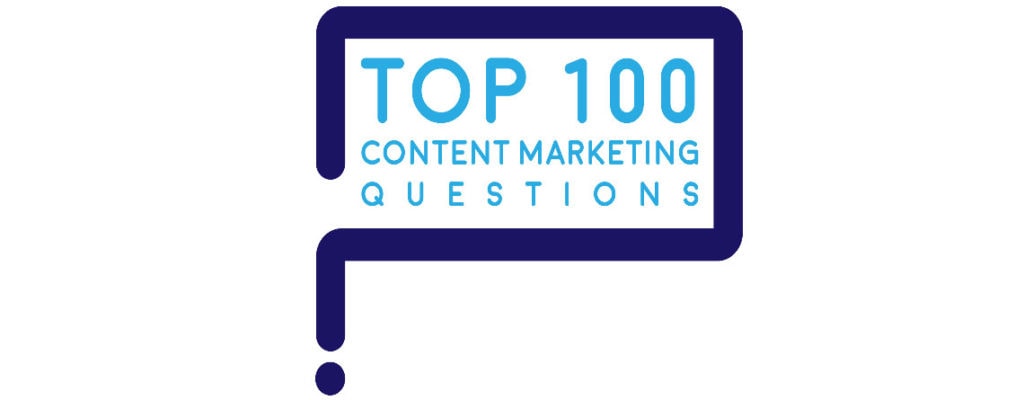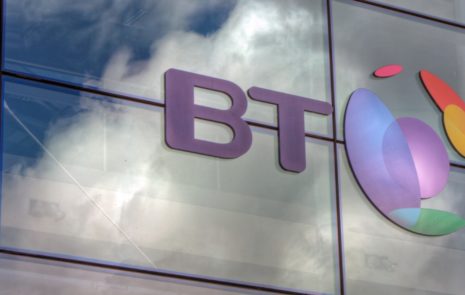
Smart marketers find a unique brand voice
Marketers from Accuweather, Cyrus One and Kaiser Permanente posed a series of tough questions about brand voice:
- How can a brand quantify content ‘tone’ as in ‘brand voice’?
- How do you create a consistent brand voice?
- What should be written from the brand voice versus an author?
- Do you have best practices/tips for creating a tone/voice on social media that matches the overall brand?
- What should the tone of voice be for the writing style? Think of the brand you are writing for or just straight informative?
Two of these questions rank among marketers’ Top 100 Questions on content marketing. In today’s blog, I’ll address all them all.
Say what you mean, uniquely
Tune into your customers and your brand personality
The better you know your brand and your customers, the more in-tune your voice will sound. Build your brand voice on a solid foundation of customer research and branding.
If your brand hasn’t yet defined its marketplace position, promise to customers, or personality, it’s too soon to work on brand voice. Define the brand first, then its voice.
If your brand already has a clearly defined position and promise, you can move towards defining your brand personality and voice.
One way to do that? Think in analogies. Ask big questions like these:
- If the brand were a country, which would it be? Neutral Switzerland? Fashionable France? Up-and-coming China?
- If the brand were an animal, which one would it be?
- Ask if the brand were a car, which one would it be?
- If the brand were a celebrity, who would it be?
Each person has their own tone of voice: that’s why you can pick out a friend’s voice in a crowd. Brands also have their own tone called brand voice.
What is a brand voice?
A brand’s tone of voice is how you say what you say.
The tone of voice directly affects purchase decisions – just as it affects all human interactions.
For example, at the end of a meal:
- One waiter asks: “Want anything else?”
- Another says, “I hope you enjoyed your meal. Would you like to take a look at tonight’s desserts?”
- A third brings out a dessert tray and says, “The chef’s chocolate cake tonight is divine. You’ve got to try it!”

Which tone makes you likelier to have dessert? See: tone of voice really matters.
This blog is about how to advance your brand voice: how to discover or create it, manage it and measure it.
How smart brands speak in a unique voice
Adopt writing guidelines
The more writers you have working on your brand, the more you need standards and guidelines for brand voice.
To start, designate standard reference books for writers to use, such as:
- the latest edition of the Merriam-Webster Collegiate Dictionary
- a style guide such as the Associated Press (AP) Style Guide
- for specialized industries, a technical dictionary such as Newton’s Telecom Dictionary.
Develop a house style guide
You can adapt this style guide example from Uberflip.
Be curious as you explore your brand voice. Ask questions about: How do people from your company actually greet customers? Everyday habits will hint at how your brand voice should sound.
Choose a formal or informal tone
Your style guide should settle questions such as how to greet people, and how to refer to your company and customers. Here’s a quick exercise to help you discover how formal or informal your brand should sound.
How formal or informal is your company? To find out, circle the words on each continuum that sound most like your brand. Invite others to participate and compare notes:

Note: If any of these examples offends customers – perhaps because you switched to a different language or used the gender-specific “guys” – cross them off your list. They are taboo for your brand voice.
A clear brand voice definition includes what you will say and what you won’t say.
No need to piss people off. (Hmm … does that sound like the Crystal Clear brand voice?)
This raises the question: can you ever go off voice? Yes, once in a while, go off voice to make a point and prevent audiences from getting bored. But be prepared for blowback.
Make your voice uniquely yours
The deep question to ask is how different is your voice from competitors? Is it distinct and ownable? Can it rise above the noise in the marketplace?
To find out, audit the brand voice as it sounds today in your website and marketing communications. Go through your website and highlight the distinct, unique elements that help define a brand voice.
As you audit, ask:
- Do you sound just like competitors? If you covered up the logo, could anyone tell the difference between brands?
- Is there anything unique or differentiating about your brand voice?
- Is that uniqueness relevant and/or meaningful to your audience?
A third party can bring more objectivity to a brand voice audit. To measure the starting point, rank the uniqueness of each webpage on a scale of 1 to 10 (with 10 being completely unique). How unique is your website’s voice?
Use pairs of opposites to discover your voice
At a minimum, describe your brand voice as what it is and what it’s not – what it moves towards and what it moves away from, on a continuum. Think of it as pairs of opposites.
For example, define the brand’s stance: how exclusive or inclusive, is it? Circle the spot where your brand lives:

Consider your brand’s relationship to customers. Do customers see your brand as a guru, guide, partner or helper?:

To clarify this relationship, imagine a group walking along a trail. A guru is several steps ahead of the customer. A guide is one or two steps ahead. A partner walks side by side. A helper trails behind.
How does your brand show up with customers? Read more about the specific roles of helpers, partners, guides, and gurus here.
Other dimensions of brand voice to explore include these. Is your brand voice:

For example, one of the most playful brand voices comes from Woot and its monkeys:

In serious categories like healthcare, a brand found its existing voice out of step with the company’s growth strategy. So, the brand started to change its voice to sound more like the energetic, inspiring, aspirational customer advocate it wanted to be.

How to make your brand voice unique?
Does your brand choose to be easy or hard to read? Choose how readable your text should be, based on your audience.
A study of adult literacy in America shows that: 1 out of 5 Americans reads at a 1st to 3rd-grade level. Only 3 out of 100 Americans can read at an 11th-grade level.
Many writers write at simpler grade levels to expand their addressable audience. Ernest Hemmingway wrote at a 7th-grade level. The Wall Street Journal writes front-page stories at a 9th-grade level.
Choose a target level of readability intentionally, not inadvertently. Test the readability of text by using the test built into Microsoft Word, or an online readability test.
Is it readable?
The more readable your text is, the larger the audience who can comprehend it. Make the choice that fits your brand best.
If Brand A is all about mystique, it may choose to talk over people’s heads, use big words, jargon, and acronyms, and be intentionally opaque.
Brand A consciously uses long words, long sentences, long paragraphs, and difficult language intentionally – writing at a 16th-grade level, so no one without a college education can understand. Since it serves an exclusive audience of medical doctors, that works for Brand A.
Brand B chooses to be all about inclusion. It speaks so simply, that even people who learned English as a second language get it.
Brand B uses short words, short paragraphs, and simple language. It writes at a 3rd-grade level, so almost everyone can read and comprehend the text.
Where does your brand fit on the readability continuum?

(Note: this blog is written at a 6.9-grade level, so more than half of Americans can comprehend it.)
Choose words that stir strong emotions
Test your headlines and subheads for emotional marketing value (EMV) using this free test.
For our blog and our clients, we write lots and lots of headlines and subheads, then test each one to maximize EMV. Why focus on emotional value? Because people make decisions based on emotions, rather than rationally.
EMV also measures whether a headline has more of an intellectual, empathetic, or spiritual appeal. This dimension matters because different types of appeals work with different audiences.
For example, caregivers resonate with empathetic messages. Analytical types prefer intellectual messages. Emphasize the traits that fit your brand’s personality.
Another reason to strive for a high EMV: Headlines with higher EMV scores get shared more.

Unique voices use unique words
Writers can make brands distinct with clever word choices.
Some brands even define their own vocabulary!
For example, the Voice of America (VOA) defined its Special English vocabulary in 1959 to assure that non-native speaker of English could understand its radio programming.
VOA’s 1500-word vocabulary is all about inclusion, by speaking simplified global English.
Another example of choosing great words is the Altoids tagline. “Curiously Strong Mints” turns into a phrase that’s seldom heard.
Only one presidential candidate uses the word malarkey: Joe Biden. He may be mocked for it, but it’s a word that’s uniquely his.
Invented words and phrases stand out: David Meerman Scott’s book Newsjacking and Robert Cialdini’s book Pre-suasion come to mind.
What’s in your unique vocabulary? Write it down and share it.
Digital, print, or live events? Use your unique voice
No matter what the communications vehicle is, use the same consistent brand voice. You want one voice on your website and in your newsletters, ads, emails, and social media.
Make your brand speak with one consistent voice. Don’t trot out a different voice for each medium.
How to choose when to use a byline
Should you use bylines on content? Yes.
Here’s why: A good byline adds value when readers recognize the writer’s name and authority. Give new writers the opportunity to build up their credibility with bylines.
Use bylines on articles, blogs, columns, and white papers written by a specific person or ghostwritten for a specific person.

For example, to write Tellabs’ Insight magazine, we hired journalists whose names were widely recognized as bylines that appeared in industry trades for years. Journalists’ bylines lent credibility and gravitas to our customer magazine.
That said, not every piece of content needs a byline. Many web pages don’t.
But if all your communications are written by “anonymous,” don’t be surprised if customers have a harder time connecting with your brand.
Speaking your brand voice even saves you money
In the end, the most powerful measure of a brand’s voice is whether it simplifies communications with customers, thereby saving money for the brand.
Suzi Williams, the former CMO of BT (aka British Telecom), said, “We’ve saved or made BT many millions of pounds through getting our tone right more often. Imagine — a simpler call-center script reduces call times by 10%. In a company like BT that’s not just a happier customer, it’s a very substantial cost saving.
“Tone of voice … costs so little and delivers not only a simpler, better, warmer brand experience, but it also saves money, and empowers and engages at the same time. Even the accountants like it!”
Smart brands learn to speak in a unique voice
And here’s how you can measure the impact of your brand voice:
- Measure the use of the first, second, and third person (we, you, they) on your website. Ideally, most content focuses on you, the customer. Too many brands egotistically focus on me, me, me, completely lacking empathy for customers.
- Audit your webpages and communications, scoring them from 1 to 10 with 10 as the most unique brand voice. Rewrite content to raise the scores.
- Measure readability and emotional marketing value (EMV). Bring all your text in line with brand voice standards.
- Define your unique vocabulary and measure your usage of unique words.
- The ultimate test is to do customer research to measure how fast and accurately customers recognize your brand voice. Show a mix of un-logoed materials from your brand and from competitors. The faster and more accurately customers identify your brand voice, the more valuable it contributes to your brand.
Demystify brand voice with a step-by-step process
Here’s a step-by-step process so you can cook up your own brand voice.

Where to hear unique voices
Let’s learn about unique voices from people who make a living with their unique voices: actors and singers.
You probably recognize the voices of the top US voiceover artists:
- Morgan Freeman, the voice for Waze and CBS News.
- Ving Rhames, who voices “We have the meats!” for Arby’s.
- Who’s your favorite voiceover artist?
Or think of distinctive singing voices, such as:
- Louie Armstrong sang Hello Dolly!
- Israel Kamakawiwoʻole singing Somewhere over the Rainbow.
- Janis Joplin singing Cry Baby.
- Willie Nelson singing any song.
- Your favorite singer.
All of their voices are instantly recognizable and full of personality. You’d never mistake one of them for another.
That said, you might or might not like their voices.

For more on brand voice, see the Toptal blog.
“How can a brand quantify content ‘tone’ as in ‘brand voice’?” and “How do you create a consistent brand voice?” are two of the Top 100 Questions on Content Marketing. You’ll find the answers here.





